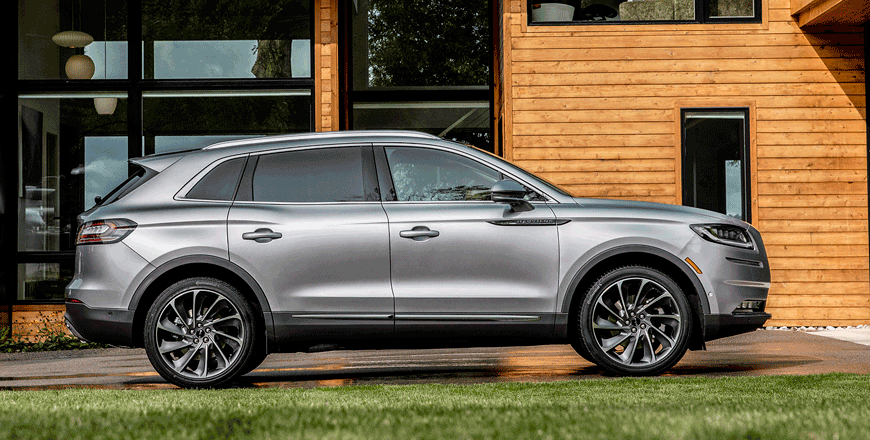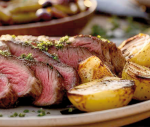You are here
Lincoln Nautilus 2.7T: Swift, sporty and stylish crossover SUV
By Ghaith Madadha - Apr 17,2023 - Last updated at Apr 17,2023

Photo courtesy of Lincoln
A sportily swift and stylish compact crossover SUV that first arrived in 2018, the Nautilus acted as both successor to, and evolution of the Lincoln MKX, which brought it into line with the premium American manufacturer’s then new design language.
Freshening up an already impressive model with improved tech, style, appointment and mechanicals including a new 8-speed gearbox in lieu of the MKX’s 6-speed unit, the Nautilus has since been updated as of 2021, and now incorporates a more sophisticated horizontally-oriented cabin and improved, more intuitive infotainment system.
Classy character
A classier, more confident and somewhat more conservative design that ditched its predecessor’s nomenclature and “eagle wing” grille design when it first arrived, the Nautilus has since seen a more subtle, almost imperceptible update incorporating discrete bumper and lighting re-style. That said, the Nautilus’ sophisticated broad and rectangular chrome mesh grille does unchanged. More horizontal and incorporating less chrome, the Nautilus’ re-styled bumper meanwhile both draws attention to the grille, and lend its body’s comparatively compact, low and wide stance a more grounded and confident demeanour.
Available with two direct injection engine options including an entry-level 2-lire 4-cylinder version with front- or all-wheel-drive, the top spec variant is meanwhile propelled by a perky and potent twin-turbocharged 2.7-litre V6 with standard all-wheel-drive. Passed down from it MKX predecessor, the 2.7T engine remains as convincingly eager as ever in service with the now re-branded Nautilus. Punchy and efficient, the 2.7T is inherited from its MKX predecessor and proves just as eager and responsive here, yet returns relatively moderate 11.2l/100km combined cycle fuel efficiency
Punchy and potent
Producing 335BHP at 5,500rpm and 380lb/ft torque at 3,250rpm the Nautilus 2.7T’s engine is prodigious in its output and responsive in operation. Pouncing from standstill with immediacy as all four driven wheels dig into tarmac, the Nautilus’ short gas flow paths make for responsively quick spooling and almost lag free turbocharging, while its soundtrack is characterised a distinctly urgent and visceral, yet subdued and distant snarl. Carrying its 2,061kg mass with quick confidence, the Nautilus meanwhile blasts through the 0-100km/h acceleration benchmark in approximately 6.5-seconds.
Responsive to throttle input, the Nautilus’ mighty 2.7T engine is energetic and versatile, pulling hard from low-end to a flexibly ample mid-range, where it overtakes and climbs inclines with effortless muscularity. Riding a rich and wide torque band for confident cruising, the Nautilus is nevertheless eager as its builds high-end power with an intense urgency towards its peak and onto a relatively high 6,500rpm rev limit. A slick and quick-shifting 8-speed automatic gearbox, meanwhile, well utilises the Nautilus’s output for performance, versatility, efficiency and refinement.
Confidence and comfort
A distinctly sporty crossover despite it not being marketed as such, the Nautilus 2.7T’s responsively precise throttle control allows one to dial in or ease back on power through corners without unintentionally overpowering its grippy 265/40R21 tyres. Turning tidily into corners with quick, direct and responsive speed sensitive steering ratio, the Nautilus allows the driver to keep both hands on the steering wheel for most, even tight, corners. Manoeuvrable through corners, the Nautilus’ wide track and comparatively modest wheelbase meanwhile provide a combination of agility and stability.
Reassuring yet nimble, the Nautilus’ all-wheel-drive sends power to its four corners when added traction and road-holding is needed, but can disengage the rear wheels for improved fuel efficiency under less demanding conditions. Well controlling body lean through bends, the Nautilus is offered with optional adaptive dampers that stiffen to tauten cornering body control, but also provide a smoother, more supple and comfortable ride quality on straights and over road imperfections, despite its large alloys wheels and firm low profile tyres.
Classy and contemporary
Confident, quiet and stable at speed, the Nautilus is forgiving over most but the harshest bumps and potholes. Settled over crests and dips, it meanwhile drives with composed fluency. Well insulated from noise, vibration and harshness, the Nautilus is refined inside, where it features clear instrumentation, good front visibility and a comfortable, supportive and highly adjustable driving position. Clean and modern in its style and uncomplicated user-friendly layouts, the Nautilus also features — now horizontally re-positioned — console-mounted pushbutton gearbox controls, in addition to steering-mounted paddle shifters for sportier manual mode driving.
Re-styled inside, its cabin has a fresher and more contemporary ambiance with a horizontal orientation and straighter lines. Adopting a more compartmentalised design, the revised dashboard treatment incorporates slimmer vents and a bigger, technologically improved tablet-style infotainment screen. Extensively equipped with comfort, convenience, infotainment, safety and driver assistance systems, the Nautilus’ airy cabin is meanwhile decked out with soft textures and quality leather. Spacious inside, for front and rear passengers, the Nautilus accommodates 1053-litres cargo, to the roof, which expands to 1948-litres when rear seats are folded.
TECHNICAL SPECIFICATIONS
Engine: 2.7-litre, transverse, twin-turbocharged V6-cylinders
Bore x stroke: 83 x 83mm
Compression ratio: 10:1
Valve-train: 24-valve, DOHC, direct injection
Redline: 6,500rpm
Gearbox: 8-speed automatic, four-wheel-drive
Gear ratios: 1st 4.48; 2nd 3.15; 3rd 2.87; 4th 1.84; 5th 1.41; 6th 1.0; 7th 0.74; 8th 0.62
Reverse/final drive: 2.88/3.65
Power, BHP (PS) [kW]: 335 (340) [250] @5,500rpm
Specific power: 124.3BHP/litre
Torque, lb/ft (Nm): 380 (515) @3,250rpm
Specific torque: 191.1Nm/litre
0-100km/h: approximately 6.5-seconds (est.)
Fuel consumption, combined; 11.2-litres/100km (estimate)
Fuel capacity: 68-litres
Wheelbase: 2,850mm
Track, F/R: 1,646/1,643mm
Ground clearance: 198mm (estimate)
Cargo volume min/max (to roof): 1,053-/1,948-litres
Kerb weight: 2,061kg
Weight distribution, F/R: 60/40 per cent (estimate)
Towing capacity: 1,587kg
Suspension, F/R: MacPherson struts/integral link
Steering: Electric-assisted rack & pinion
Steering ratio: 17.7
Turning circle: 12-metres
Brakes, F/R: Ventilated discs, 350mm/345mm
Tyres: 265/40R21
Related Articles
A quick, comfortable and highly well equipped midsize premium crossover utility vehicle (CUV) introduced last year, the Lincoln Nautilus is
Launched as a 2016 model, the second generation Lincoln MKX is part of a redoubled effort to revitalise the traditional American luxury make
First launched in 2016, the second generation Volkswagen Tiguan was a distinct step up from its predecessor.


















